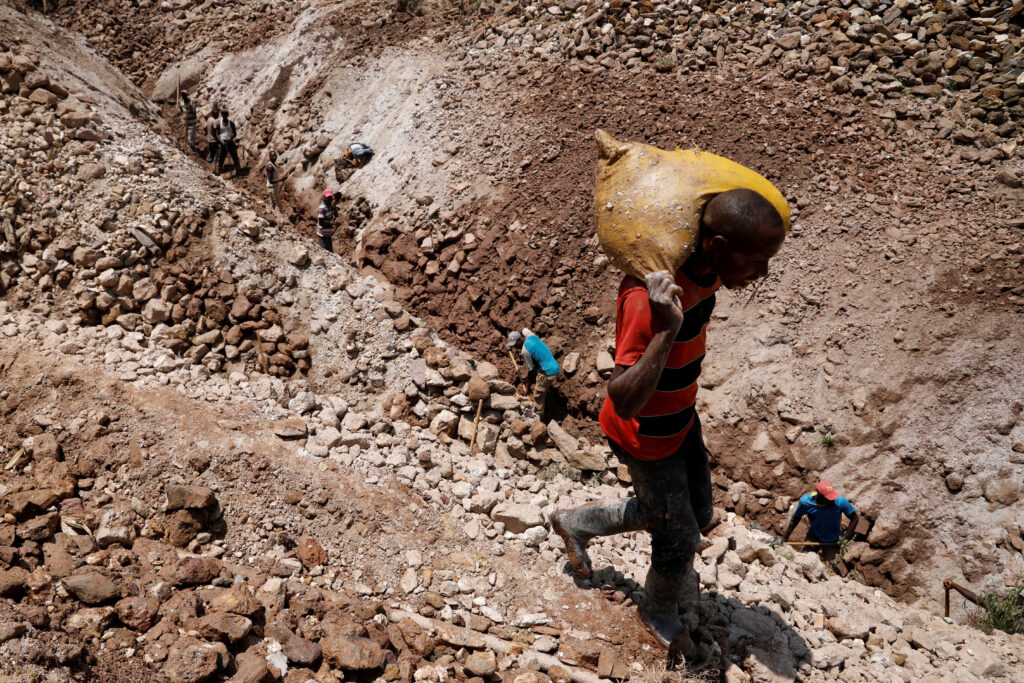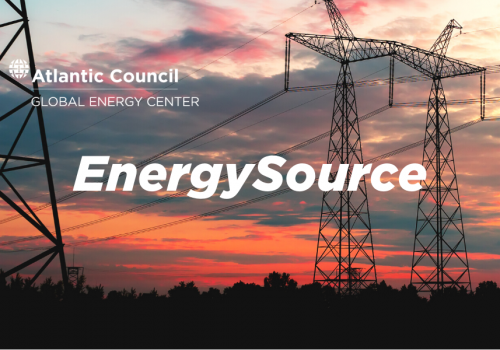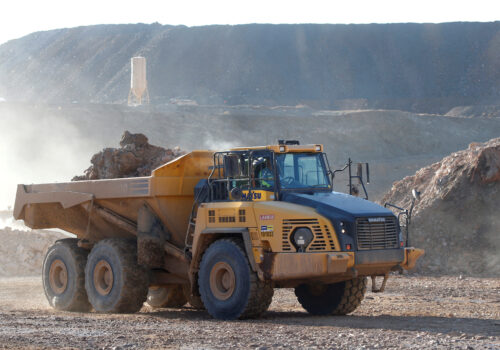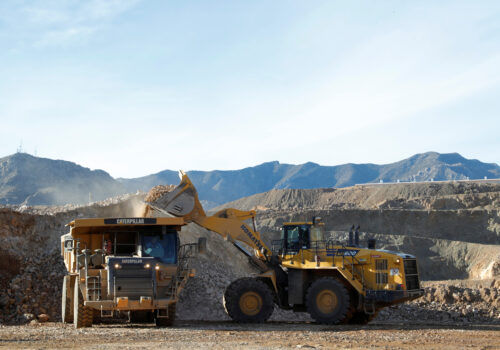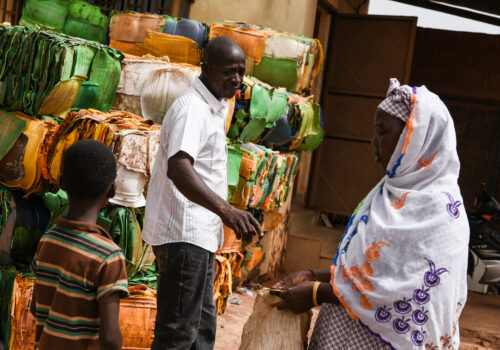The insurgency by M23 in the eastern Democratic Republic of the Congo (DRC) is the latest example of the damage that can be wrought by the illicit trade of mined materials. It also highlights the limitations of some developing economy governments to oversee mining, particularly when the deposits are easily accessible. As the United States considers a deal that would provide security to the DRC in exchange for access to its critical minerals, it is important to understand the level and nature of the commitment required to address the complex challenges related to critical mineral development in the country. Indeed, broader international engagement—from neighboring governments to commercial buyers—is likely needed to bolster the DRC’s capacity to manage its minerals.
STAY CONNECTED
Sign up for PowerPlay, the Atlantic Council’s bimonthly newsletter keeping you up to date on all facets of the energy transition.
Conflict minerals and the M23 insurgency
The Great Lakes region of Africa, which straddles the DRC, Rwanda, Burundi, and Uganda, supplies 30 percent of the world’s coltan, a crucial mineral for high-end electronics. Other valuable minerals, such tin, tungsten, tantalite, and gold, are often mined alongside coltan in the region. Artisanal mining is common—while this provides livelihoods for many, it also gives rise to dangerous working conditions, child labor, and political conflict and instability.
Much of the region’s coltan is deemed a conflict mineral as mining areas are controlled by armed groups and organized crime. The DRC government lacks firm control of its territories, especially in the eastern provinces, and transportation infrastructure is underdeveloped. Because of these challenges, foreign companies often avoid direct mining in the DRC, instead purchasing minerals through middlemen.
The M23 rebel group, an ethnic Tutsi-led militia in the eastern DRC, is fighting the DRC national army and claims to protect Tutsi populations from Hutu militias. Its resurgence in 2022 is linked to frustrations over the government’s slow implementation of peace agreements and worsening security, although it is argued that M23 acts in service of Rwanda’s interests in the region’s minerals. The M23 insurgency is allegedly financed through the exploitation of coltan and other minerals, including reports that M23 fraudulently exported at least 150 metric tons of coltan (7-10 percent of DRC’s annual global supply) to Rwanda in 2024. Current estimates put this as high as 120 metric tons per month. The current involvement and role of Rwanda is evidenced by the presence of 4,000 Rwandan army personnel and heavy weaponry.
The ongoing insurgency has halted regular mining activities, leading to “command” mining in which rebels control operations. This is affecting production levels, worker safety, and regional investment. Conflict has placed all transport routes under rebel control, increasing costs and delays due to road closures and violence.
An important dynamic for global supply chains is that rebel groups like M23, along with other middlemen, foster the mixing of legal and illegal minerals. This effectively launders the illegally mined material, allowing its sale to parties that are mandated to buy ethically sourced product, such as US-based customers who must comply with the Dodd-Frank Act. These sales channel profits to armed groups while depriving the DRC of its rightful revenue. Rwanda is effectively complicit, as it does not charge taxes on mineral exports and allows imported goods to be reassigned as “Made in Rwanda” if they are transformed or processed within the country with a minimum 30 percent value addition.
DRC efforts to regain control
Amid the ongoing conflict in the eastern DRC, there is an intensified call for international accountability and economic reforms to address resource-driven violence. At the February 2025 United Nations (UN) Human Rights Council session, the International Chamber of Commerce and Development urged the UN to enhance transparency in raw material transfers from Rwanda to combat mineral exploitation crimes. Enhanced oversight, it argued, would hold resource looters accountable.
Additionally, at the Munich Security Conference, the DRC accused Rwanda of destabilizing the region to exploit its minerals and proposed measures to encourage legitimate investments and transparent contracts while urging the international community to facilitate peace.
The DRC, meanwhile, has classified certain mining sites in North and South Kivu provinces as “red” zones, halting mineral trading in these areas. The country is orchestrating legal and regulatory efforts, including installing ore tracking mechanisms to combat the illegal mineral trade, disrupt conflict financing, and align mining practices with international standards. The red zone classification is intended to last six months and includes independent audits to ensure responsible sourcing.
On the diplomatic and military front, a quid pro quo of mineral rights for security cooperation seems to be developing whereby the DRC is courting Western governments’ security assistance to thwart the Rwanda-backed incursion. Much of the international community is also demanding stricter standards for purchasing minerals ostensibly mined and processed in Rwanda. The DRC will need international support to implement measures for strict oversight of the region and, more fundamentally, addressing the sources of instability that fuel the conflict. On a positive note, in late March, a Qatar-brokered peace summit resulted in commitments by the leaders of the DRC and Rwanda to cease hostilities.
Next steps
Achieving lasting peace in the eastern DRC requires addressing the root causes of conflict, including ethnic tensions, political instability, and competition for mineral resources. It will not come quickly.
The DRC needs sustained dialogue with rebel groups and neighboring countries to reach a peace agreement and foster reconciliation among ethnic groups. It also needs to improve the capacity and legitimacy of institutions to manage resources, provide security, combat corruption, and enhance transparency.
Meanwhile, mineral buyers and the international community can help the DRC by enforcing ethical sourcing that follows regulations like the Dodd-Frank Act and OECD guidelines, supporting peace initiatives with diplomatic and financial aid, and providing humanitarian assistance to support displaced populations, rebuild communities, and enforce human rights laws.
The M23 insurgency is yet another reminder that the international community must support resource-rich countries in building the capacity to formalize mining and adhere to recognized principles for working and living conditions. The United States’ and others’ overtures to help provide security may be a good first step, but it only sets a foundation for much more work to be done.
Clarkson Kamurai is the critical minerals program manager at the Payne Institute and a PhD researcher in the minerals and energy economics program at the Colorado School of Mines. Kamurai has engineering experience in base and precious metal mining in sub-Saharan Africa and South America.
Brad Handler is the program director for the Payne Institute for Public Policy’s Energy Finance Lab. Previously, he was an equity research analyst in the oil and gas sector at investment banks including Credit Suisse and Jefferies.
Morgan Bazilian is the director of the Payne Institute for Public Policy at the Colorado School of Mines and a former lead energy specialist at the World Bank.
RELATED CONTENT
OUR WORK
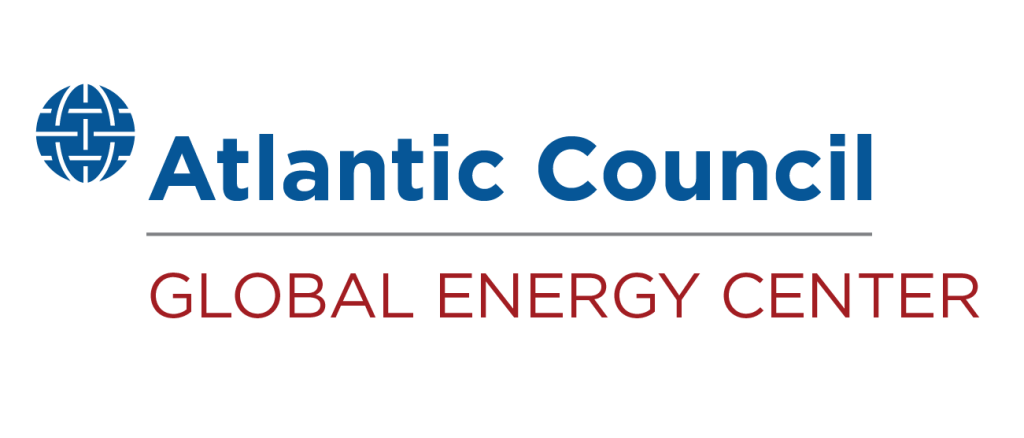
The Global Energy Center develops and promotes pragmatic and nonpartisan policy solutions designed to advance global energy security, enhance economic opportunity, and accelerate pathways to net-zero emissions.
Image: A man carries sacks of ore at a coltan mine near the town of Rubaya in the Eastern Democratic Republic of Congo, August 13, 2019. REUTERS/Baz Ratner/File Photo
